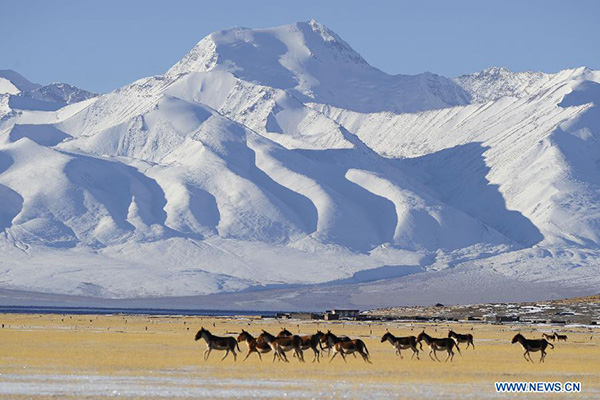
A herd of kiangs (Equus kiang) run past a village at the foot of a snow mountain in Burang County of Ali Prefecture in Southwest China’s Tibet autonomous region, Oct 23, 2014. The wildlife population in Ali Prefecture has grown as China makes increasing efforts to curb illegal hunting in the country’s natural reserves. Ali Prefecture, which is among the most remote areas in Tibet Autonomous Region, is home to 19 rare and endangered species including the Tibetan antelope and the snow leopard. [Photo/Xinhua]
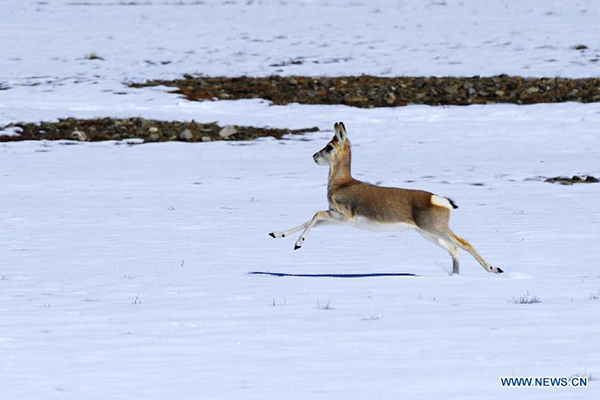
A Tibetan goa (Procapra picticaudata) gallops on a snow-covered grassland in Burang County of Ali Prefecture in Southwest China’s Tibet autonomous region, Oct 22, 2014. The wildlife population in Ali Prefecture has grown as China makes increasing efforts to curb illegal hunting in the country’s natural reserves. Ali Prefecture, which is among the most remote areas in Tibet autonomous region, is home to 19 rare and endangered species including the Tibetan antelope and the snow leopard. [Photo/Xinhua]
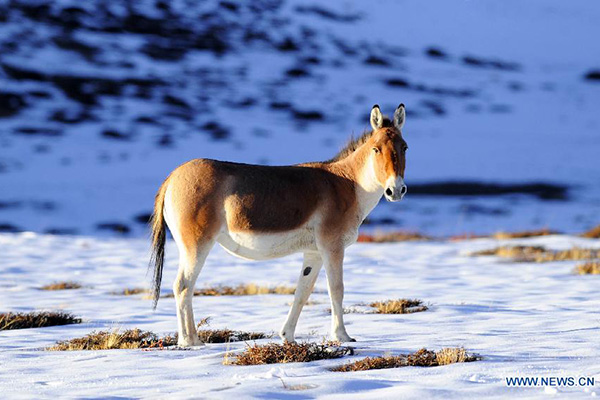
A kiangs (Equus kiang) is seen in Ali Prefecture in Southwest China’s Tibet autonomous region, Oct 23, 2014. The wildlife population in Ali Prefecture has grown as China makes increasing efforts to curb illegal hunting in the country’s natural reserves. Ali Prefecture, which is among the most remote areas in Tibet autonomous region, is home to 19 rare and endangered species including the Tibetan antelope and the snow leopard. [Photo/Xinhua]
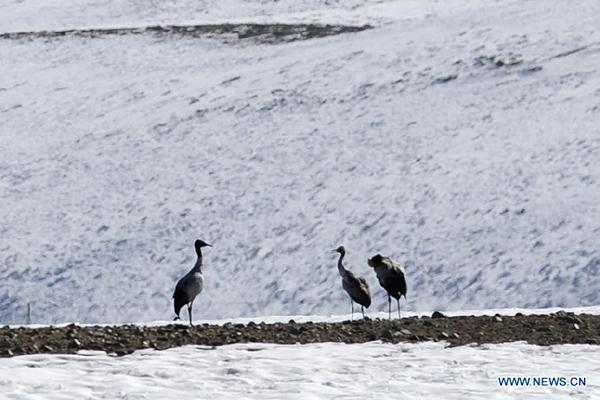
Three black-necked cranes (Grus nigricollis) are seen in Burang County of Ali Prefecture in Southwest China’s Tibet autonomous region, Oct 23, 2014. The wildlife population in Ali Prefecture has grown as China makes increasing efforts to curb illegal hunting in the country’s natural reserves. Ali Prefecture, which is among the most remote areas in Tibet autonomous region, is home to 19 rare and endangered species including the Tibetan antelope and the snow leopard. [Photo/Xinhua]
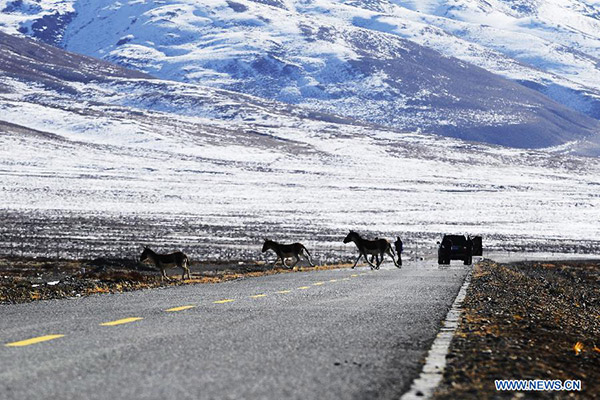
A herd of kiangs (Equus kiang) run across a road in Ali Prefecture in Southwest China’s Tibet autonomous region, Oct 24, 2014. The wildlife population in Ali Prefecture has grown as China makes increasing efforts to curb illegal hunting in the country’s natural reserves. Ali Prefecture, which is among the most remote areas in Tibet autonomous region, is home to 19 rare and endangered species including the Tibetan antelope and the snow leopard.[Photo/Xinhua]
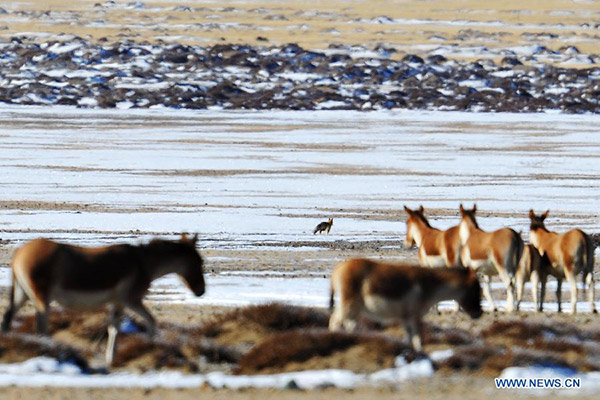
A herd of kiangs (Equus kiang) look at a fox (afar) in Ali Prefecture in Southwest China’s Tibet autonomous region, Oct 23, 2014. The wildlife population in Ali Prefecture has grown as China makes increasing efforts to curb illegal hunting in the country’s natural reserves. Ali Prefecture, which is among the most remote areas in Tibet autonomous region, is home to 19 rare and endangered species including the Tibetan antelope and the snow leopard.[Photo/Xinhua]
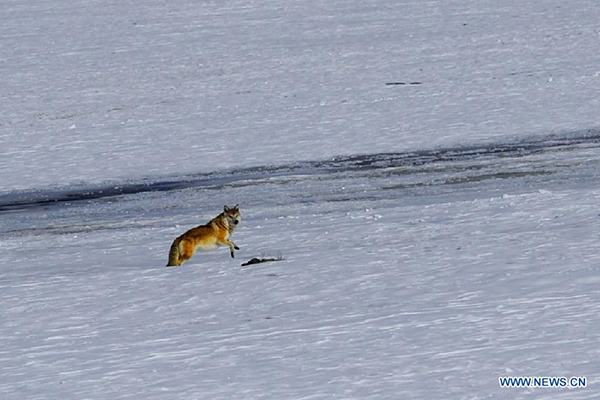
A wolf is seen on a snow-covered grassland in Burang County of Ali Prefecture in Southwest China’s Tibet autonomous region, Oct 24, 2014. The wildlife population in Ali Prefecture has grown as China makes increasing efforts to curb illegal hunting in the country’s natural reserves. Ali Prefecture, which is among the most remote areas in Tibet autonomous region, is home to 19 rare and endangered species including the Tibetan antelope and the snow leopard. [Photo/Xinhua]
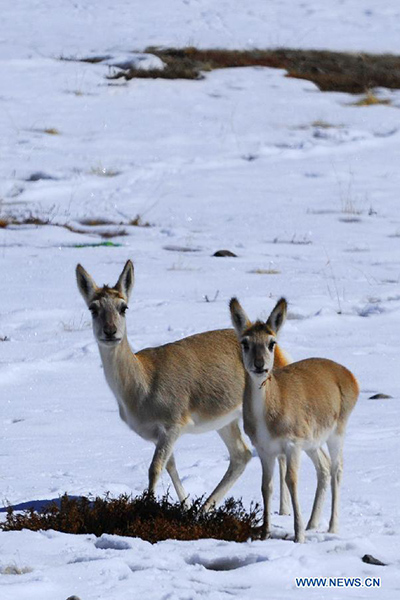
Two Tibetan goas (Procapra picticaudata) are seen on a snow-covered grassland in Ali Prefecture in Southwest China’s Tibet autonomous region, Oct 23, 2014. The wildlife population in Ali Prefecture has grown as China makes increasing efforts to curb illegal hunting in the country’s natural reserves. Ali Prefecture, which is among the most remote areas in Tibet autonomous region, is home to 19 rare and endangered species including the Tibetan antelope and the snow leopard. [Photo/Xinhua]
